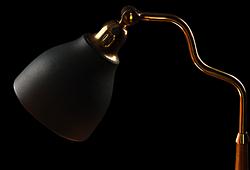Carl Milles
"Den flygande hästen" (=The Flying Horse)
Signed Carl Milles. Foundry mark G pettersson Fud. Numbered 6/12. The motif conceived 1923. Bronze, green patina. Height 50 cm (including plexiglass base 52 cm). Length 88 cm.
Literature
Erik Näslund, "Carl Milles - en biografi", 1991, the motif mentioned at p. 164-166, compare another copy ill at p. 165.
Henrik Cornell, "Carl Milles - hans verk", SAK, 1963, the motif mentioned at p. 41. Compare another copy in marble (which belongs to the Nationalmuseum in Stockholm) ill. at p. 42.
M.P. Verneuil, "Carl Milles, sculpteur Suédois", 1929, Volume I, compare another copy ill at pl. 35. (here called "Cheval au galop").
More information
The Flying horse
The Flying Horse was originally intended to be part of a planned monument with king Charles XII, as a preserved drawing of Milles hand shows. However, the artist soon abandoned the idea of an equestrian monument and instead made Flying Horse a stand-alone work. The Flying Horse was one of the very first examples of Milles floating sculptures. The artist returned throughout his life to the floating form and it is central to Milles art. The free and detached from the earth creates a feeling of independence and strength and can be perceived as freedom both physically and intellectually. The writer and poet Verner von Heidenstam saw the sculpture in the artists studio and wrote to Milles about his impressions: "For a long time I have not seen anything as beautiful as your horse. Will, tendons and muscles throughout. I do not understand how you created this... The earth does not exist for that horse. It flies like the celestial objects without wings. "
Artist
Carl Milles was a Swedish sculptor born in Lägga. He studied at the Technical School in Stockholm, at the Ecole des Beaux-Arts in Paris under Auguste Rodin and on study trips to Germany, the Netherlands and Belgium. In Paris he came to stay for many years and made a living as an ornament carver. He studied the animals in the Jardin des Plantes (the Zoological Garden) and was strongly influenced by Auguste Rodin. Milles made a breakthrough with a monument to Sten Sture in Uppsala. He exhibited at the World's Fair in 1900 and was later given a solo exhibition at the Tate Gallery in London. Milles was professor of modeling at the Royal Academy of Arts in Stockholm. Well-known sculptures in public places signed by Carl Milles are the "Gustav Vasa" statue at the Nordic Museum, "Orfeusgruppen" outside the concert hall in Stockholm and the "Poseidonfontänen" in Gothenburg.
Read more


























































